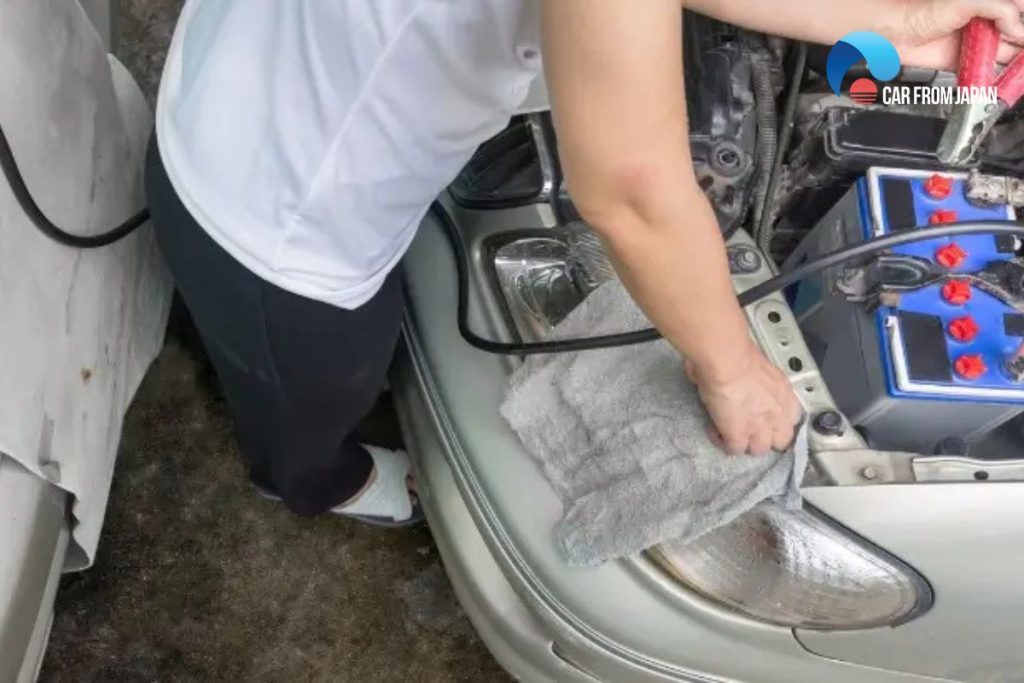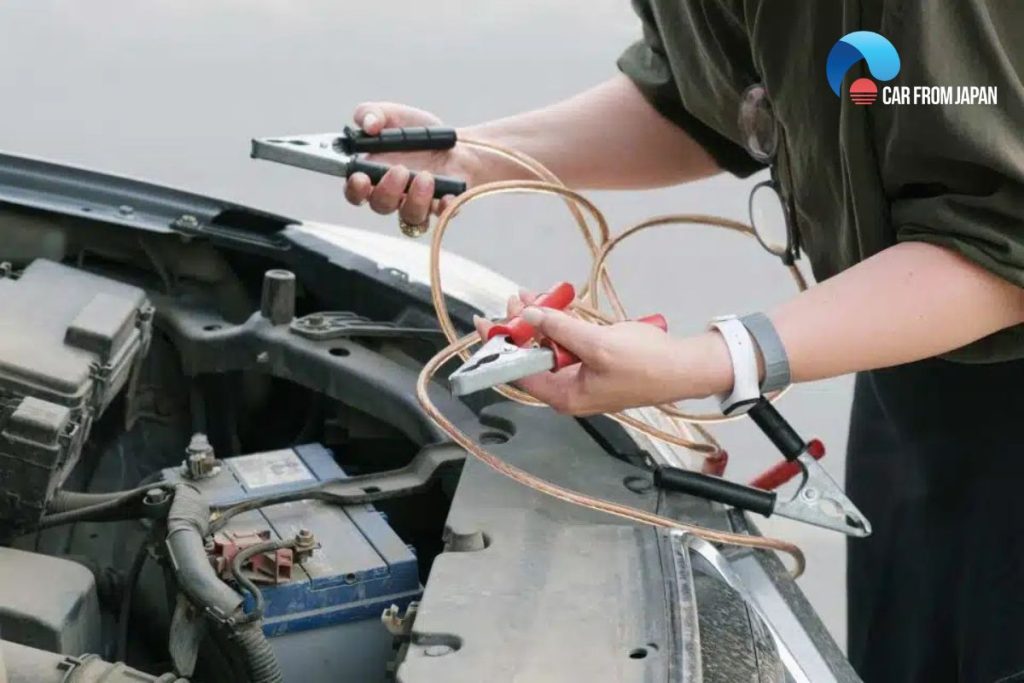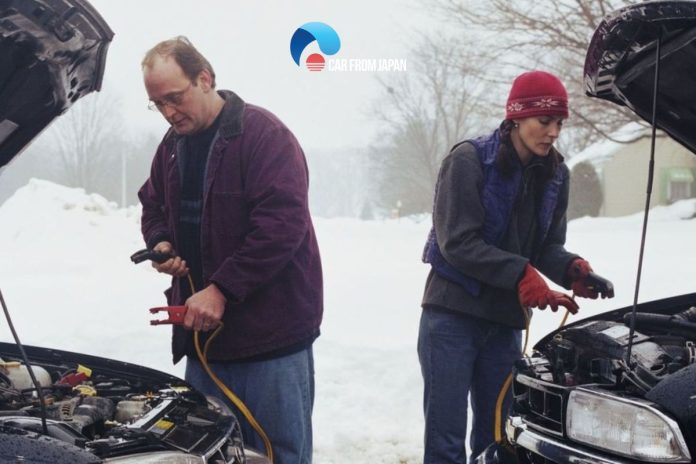You might have heard that revving your engine will help charge your car battery faster. Technically, the short answer is yes.
That said, there are certain things that you need to look out for to avoid engine damage, and there are some rules on how to do it safely to charge a completely depleted battery during a jump-start, whether your car is the donor or the donee car.
Let’s find out how revving the engine might help charging your battery, the proper steps to do it safely during a jump-start and other important things to pay attention to in this case.
Contents
- Does Revving the Engine Charge Your Battery Faster?
- The Safest Way to Rev the Engine During A Jump-Start
- Other Important Things To Do When Jump-Starting
- FAQs on Revving The Engine
- Can car over revving damage the battery while trying to charge it faster?
- Can frequent revving to charge the battery shorten alternator life?
- Is there an ideal RPM to help charge the battery faster without damaging the engine?
- Can revving the engine cause sudden voltage spikes that harm electronics?
- What happen when you do engine revving while driving?
- What should you do when car revving on its own?
- Final Words
Does Revving the Engine Charge Your Battery Faster?
Technically Yes. Revving up your engine technically does help charge your car battery faster but only when the battery is in a significant state of discharge. If your battery is not, there’s no merit in doing so.
This is because automotive systems are engineered in a way that makes sure the battery remains charged throughout usage, that is if it is discharged, it will be charged immediately unless the car sits idle for an extended period of time.
What happens when you turn the ignition key is that the battery provides power to turn the engine, which turns the alternator, and the alternator produces electricity to charge the battery.
The most common type of car battery is lead-acid batteries. This type of battery only requires the level of amperage supplied by the alternator when it runs in idle.
However, when the battery is depleted or discharged to a certain low level, it will be primed to receive more amperage from the alternator compared to when the car is idling.
When this happens, it makes sense to rev the engine. Because when the engine turns faster, the alternator also turns faster and thus will produce more electricity to charge the battery faster with a higher amperage.
And During A Jump-Start
For the car giving the jump-start
If you are giving another car a jump-start, revving your engine with the jumper cables connected would only make sense if your battery is in a deep discharge state.
By revving your engine up to 2,000 RPM or 2,500 RPM and holding it there while the other car tries to start, you’re making the alternator turn faster and thus supplying a little bit of extra power to your battery, which it can in turn donate to the other car.
And depending on the respective engine sizes and battery conditions, that extra power could make a difference. You just don’t want to push the gas pedal to the floor in any case.
For the car receiving the jump-start
If you’re the donee car, once your engine starts, you should rev the engine to between 1,200 RPM and 2,000 RPM for around five minutes while the jumper cables are still connected (higher RPM is not advisable for reasons that will be explained further below).
Revving the engine will, as above, deliver more amperage to the battery and warm it up, thus makes charging quicker. When you’re needing a jump-start because of a completely depleted battery, car engine rev also adds a surface charge to the battery.
A surface charge is important for a battery in a deep discharge state, as it will top up the voltage of the battery and ready it for receiving more amperage from the alternator.
After the engine rev to charge your battery, make sure to take your car out for a drive to allow the alternator to continue charging the battery.

Depending on how depleted your battery is, you generally need to drive the car at least 30 minutes up to an hour to give the battery any meaningful charge and get it back to a safe level for your next start, so that you won’t need another jump start very soon after.
If you don’t want to drive for an hour just to top your battery off, the trick here is to use as little electricity as possible to make sure nothing is unnecessarily draining power.
This ensures that the alternator is sending as much energy into the battery as possible. It’s best to go for a drive when it’s bright outside, and turn off all lights and other electrical systems and accessories.
… But Be Careful of Potential Engine Damage
It’s important to note that if the engine is cold or if the car is in neutral, revving the engine to charge the battery faster can cause excessive engine wear due to sudden spikes in the temperature of the engine. For this reason, you should also avoid car revving too frequently.
The proper and safe way to rev the engine when trying to charge your car battery faster is to avoid significant spikes in engine temperature.
To do this, you need to warm your engine up beforehand by letting the engine idle for a few minutes. This will help prevent engine damages from revving and can also help charge the battery more efficiently.
Unfortunately, if you’re dealing with a dead battery and need to jump start your car, you won’t have a warmed engine.
In this case, the risk of hurting your engine is higher, but do follow the steps below to safely rev your engine during a jump-start.
The Safest Way to Rev the Engine During A Jump-Start
To safely revving the engine while receiving a jump-start with a dead battery, you need to consider the temperature of the engine.
After you start the engine, you should allow it to idle for about a minute to let the engine oil properly circulate. Letting the oil warm up and flowing can help prevent engine damage while revving.
Next, rev your car. Press down on the accelerator pedal until the needle on your tachometer dips into the red end of the gauge, which indicates that your car has reached maximum safe engine speed.
When you are finished revving your car, slowly release the accelerator pedal until the engine returns to idle.
READ MORE: How To Test A Car Battery With A Multimeter
Other Important Things To Do When Jump-Starting
Minimize The Load
When you jump-start another car, you should turn off all electrical accessories, including the headlights, the air conditioning unit, the radio, even the subwoofer and the electric butt-scratcher.
The less power your own car is consuming, the more you can give to the other car. The same rules apply if your car is the one receiving the jump-start.
Without any accessories that might be draining power, the alternator can deliver as much power as possible to the battery to restore it.
Once your engine starts, you can rev it up to charge the battery faster and drive it for at least 30 minutes to keep the battery charged.
Try To Stop Somewhere You Can Get Help
A battery can withstand a certain number of full discharges, or it can die and be recharged back to life for a limited number of times.
So when you’re dealing with a dead battery and need a jump-start, there’s also the possibility that your battery might be at the end of its life, especially if your battery is old, that is if it’s at least 3 years old.
In this case, there’s a good chance that after the jump-start, it will die on you again pretty soon, and this time it might be dead and gone for real.
For this reason, if you have just jump-started a dead battery and have been driving it for a while, make sure that if you need to stop somewhere on the way and turn your car off, do stop somewhere you can easily get help.
Because you might need another jump start right away. With this kind of dead battery, the only thing you can do is to have it replaced.

FAQs on Revving The Engine
Can car over revving damage the battery while trying to charge it faster?
Not directly. The battery has a regulator to prevent overcharging, but consistently high revs can overwork the alternator, leading to heat buildup and potential premature failure.
Can frequent revving to charge the battery shorten alternator life?
Yes. While occasional revving is harmless, repeatedly revving hard just to boost charging can stress the alternator bearings and electronics over time.
Is there an ideal RPM to help charge the battery faster without damaging the engine?
Generally, keeping the engine around 1,500–2,000 RPM is enough to maximize alternator output safely without stressing engine components.
Can revving the engine cause sudden voltage spikes that harm electronics?
In rare cases, especially if the alternator’s voltage regulator is failing, revving could create voltage spikes that may damage sensitive electronics like the ECU or sensors.
What happen when you do engine revving while driving?
Revving the engine while driving wastes fuel, increases wear and tear, and generates unnecessary noise and heat.
It can also damage the drivetrain, especially in manual transmission vehicles, and potentially lead to loss of control in low-traction situations.
What should you do when car revving on its own?
If your car revs on its own, pull over safely, turn off the engine, and call a tow truck.
This indicates a serious problem like a vacuum leak, throttle issue, or sensor malfunction that requires professional diagnosis and repair. Do not continue driving.
Final Words
Revving the engine is not really an effective or recommended way to charge a car battery frequently due to several potentials for damage.
And if you want a safest way to rev a car engine during a jump-start, take note on some cautious beforehand!
For more insightful Car maintenance tips, follow Car From Japan today!



